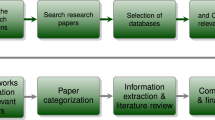Abstract
Trust brings a new method for building scalable and fine-grained access control mechanism in P2P systems. The quantificational expression of trust and the calculation of trust in a trust network are the basis of trust degree based access control. In this paper, the properties of trust is analyzed by referring to the fruits from social science; the semantics of trust in the context of access control is described, and a trust degree based access control model named TDBAC is introduced. Basing on the properties and semantics of trust, a computational trust model which includes a multilevel comprehensive evaluation method for expressing direct trust and calculators for computing recommended trust is put forward. To compute trust in a trust network, an algorithm that transforms a trust network to a computable expression is given. The algorithm simplifies the computation process and is also flexible.
Similar content being viewed by others
Explore related subjects
Discover the latest articles and news from researchers in related subjects, suggested using machine learning.References
Fast A, Jensen D, Neil L B. Creating social networks to improve peer-to-peer networking. In: KDD’05: Proceeding of the Eleventh ACM SIGKDD International Conference on Knowledge Discovery in Data Mining, New York, 2005. 568–573
Krishnan R, Sandhu R, Niu J, et al. Formal models for group-centric secure information sharing. Technical Report CS-TR-2009-002. Department of Computer Science, The University of Texas, San Antonio, 2009
Li J, Dabek F. F2F: reliable storage in open networks. In: 5th International Workshop on Peer-to-Peer Systems (IPTPS’ 06), Santa Barbara, CA, USA, 2006
Blaze M, Feigenbaum J, Lacy J. Decentralized trust management. In: IEEE Conference on Security and Privacy, Oakland, CA, 1996. 5
Bizer C, Cyganiak R, Gauss T, et al. The TriQL.P browser: Filtering information using context-, content- and rating-based trust policies. In: Proceedings of the Semantic Web and Policy Workshop at the 4th International Semantic Web Conference, Galway, Ireland, 2005
Atrf Y. Building trust in e-commerce. IEEE Internet Comput, 2002, 6: 18–24
Bertino E, Khan L R, Sandhu R, et al. Secure knowledge management: confidentiality, trust, and privacy. IEEE Trans Syst Man Cybern A, 2006, 36: 429–438
Mudhakar S, Xiong L, Liu L. Trustguard: countering vulnerabilities in reputation management for decentralized overlay networks. In: Proceedings of the 14th International Conference on World Wide Web, New York, 2005. 422–431
Zhou R, Hwang F K. Powertrust: A robust and scalable reputation system for trusted peer-to-peer computing. IEEE Trans Parall Distr Syst, 2007. 18: 460–473
Blaze M, Feigenbaum J, Keromytis A D. KeyNote: Trust management for public-key infrastructures. Lecture Notes Comput Sci, 1999, 1550: 59–63
Chu Y H, Feigenbaum J, LaMacchia B, et al. REFEREE: Trust management for Web applications. World Wide Web 1997, 2: 127–139
Li N, Benjamin N G, Feigenbaum J. Delegation logic: a logic-based approach to distributed authorization. ACM Trans Inf Syst Secur, 2003, 6: 128–171
Beth T, Borcherding M, Klein B. Valuation of trust in open networks. In: Proceedings of the European Symposium on Research in Security (ESORJCS). Brighton: Springer-Verlag, 1994. 3–18
Jøsang A. The right type of trust for distributed systems. In: Proceedings of the 1996 New Security Paradigms Workshop. New York: ACM Press, 1996
Jøsang A, Hayward R, Pope S. Trust network analysis with subjective logic. In: Proceedings of the Australasian Computer Science Conference (ACSC’06), Hobart, 2006. 1
Ray I, Ray I, Chakraborty S. An interoperable context sensitive model of trust. J Intell Inf Sys, 2009, 32: 75–104
Abdul-Rahman A, Hailes S. A distributed trust model. In: Proceedings of the 1997 New Security Paradigms Workshop, New York: ACM, 1997
Abdul-Rahman A. A framework for decentralised trust reasoning. PhD thesis, University of London, 2004. 12
Tang W, Hu J B, Chen Z. Research on a fuzzy logic-based subjective trust management model. J Comput Res Dev, 2005, 42: 1654–1659
Richardson M, Agrawal R, Domingos P. Trust management for the semantic web. In: International Semantic Web Conference, Sanibel Island, Florida, USA, 2003. 351–368
Agudo I, Fernandez-Gago C, Lopez J. A model for trust metrics analysis. TrustBus 2008, LNCS 5185. Berlin: Springer-Verlag, 2008. 28–37
Huang J, Nicol D. A calculus of trust and its applications to PKI and identity management. In: 8th Symposium on Identity and Trust on the Internet, Gaithersburg, Maryland, USA, 2009. 23–37
Gambetta D, ed. Trust: making and breaking cooperative relations. Basil Blackwell, 1988
Hardin R. The street-level epistemology of trust. Polit Society, 1993, 21: 505–529
Christianson B, Harbison W. Why isn’t trust transitive? In: Proceedings of the Security Protocols Workshop. Cambridge, UK, 1996. 171–176
ISO 7498-2, OSI security architecture, Feb. 1989
Lampson B W. Protection. In: Proc 5th Princeton Conf on Information Sciences and Systems, Princeton, 1971. 437–443
Harrison M A, Ruaao W L. Protection in operating systems. Commun ACM, 1976, 19: 461–471
Zadeh L A. Fuzzy Sets. Inf Control, 1965, 8: 338–353
Guo Y J. Theory, Method and Application of Comprehensive evaluation. Beijing: Science Press, 2007
Author information
Authors and Affiliations
Corresponding author
Rights and permissions
About this article
Cite this article
Lang, B. A computational trust model for access control in P2P. Sci. China Inf. Sci. 53, 896–910 (2010). https://doi.org/10.1007/s11432-010-0108-7
Received:
Accepted:
Published:
Issue Date:
DOI: https://doi.org/10.1007/s11432-010-0108-7




